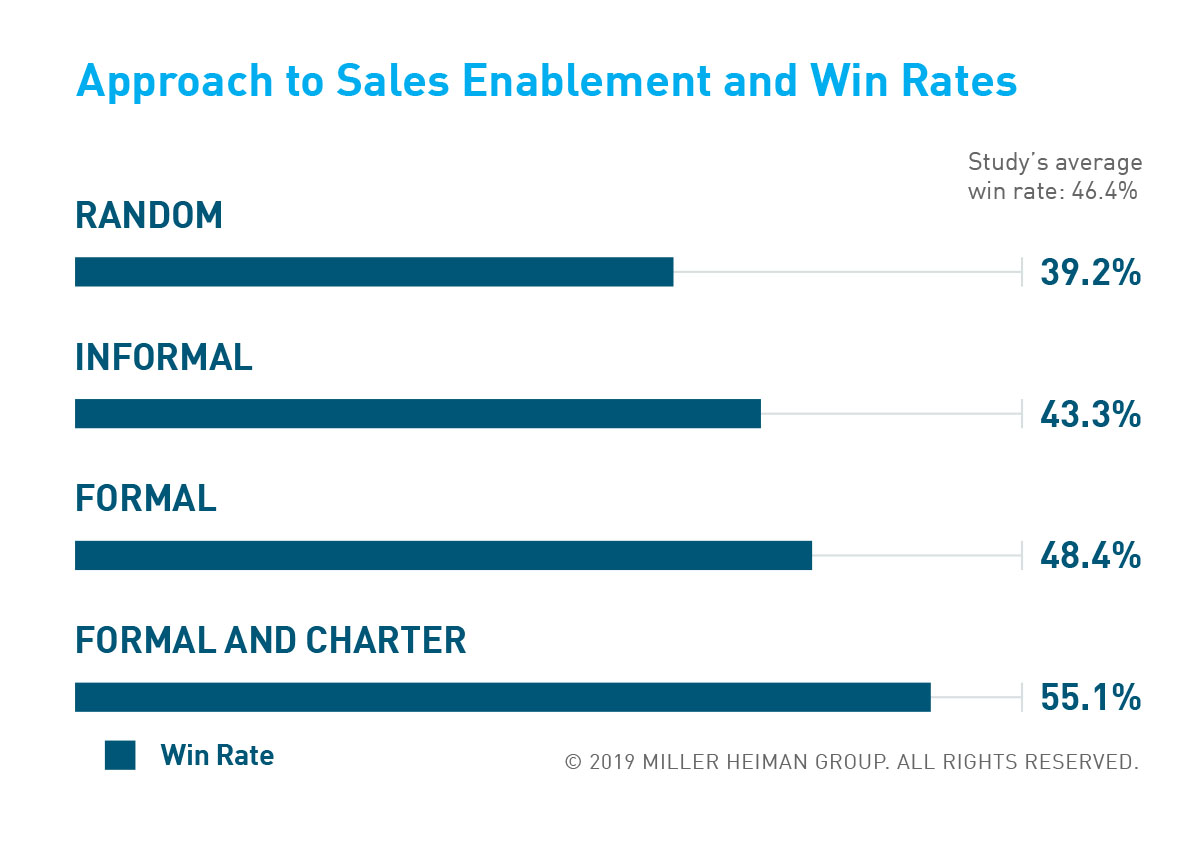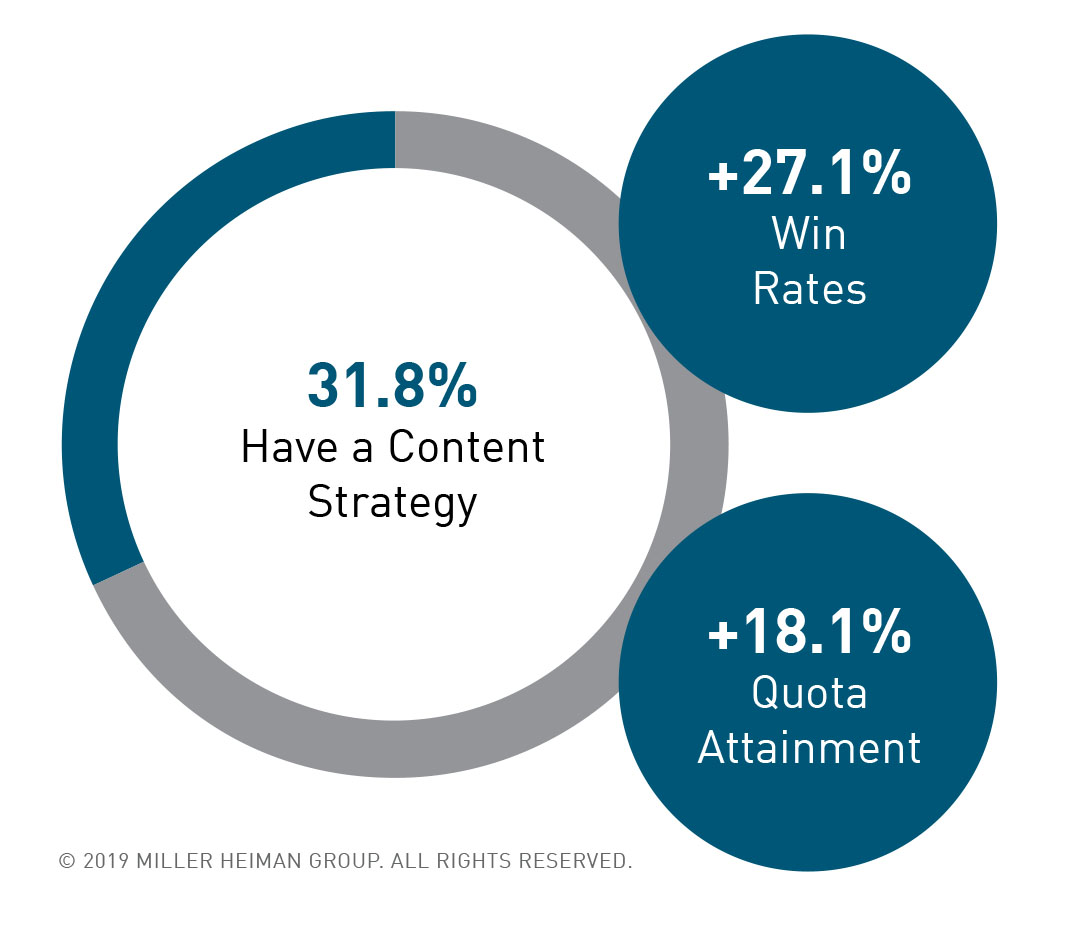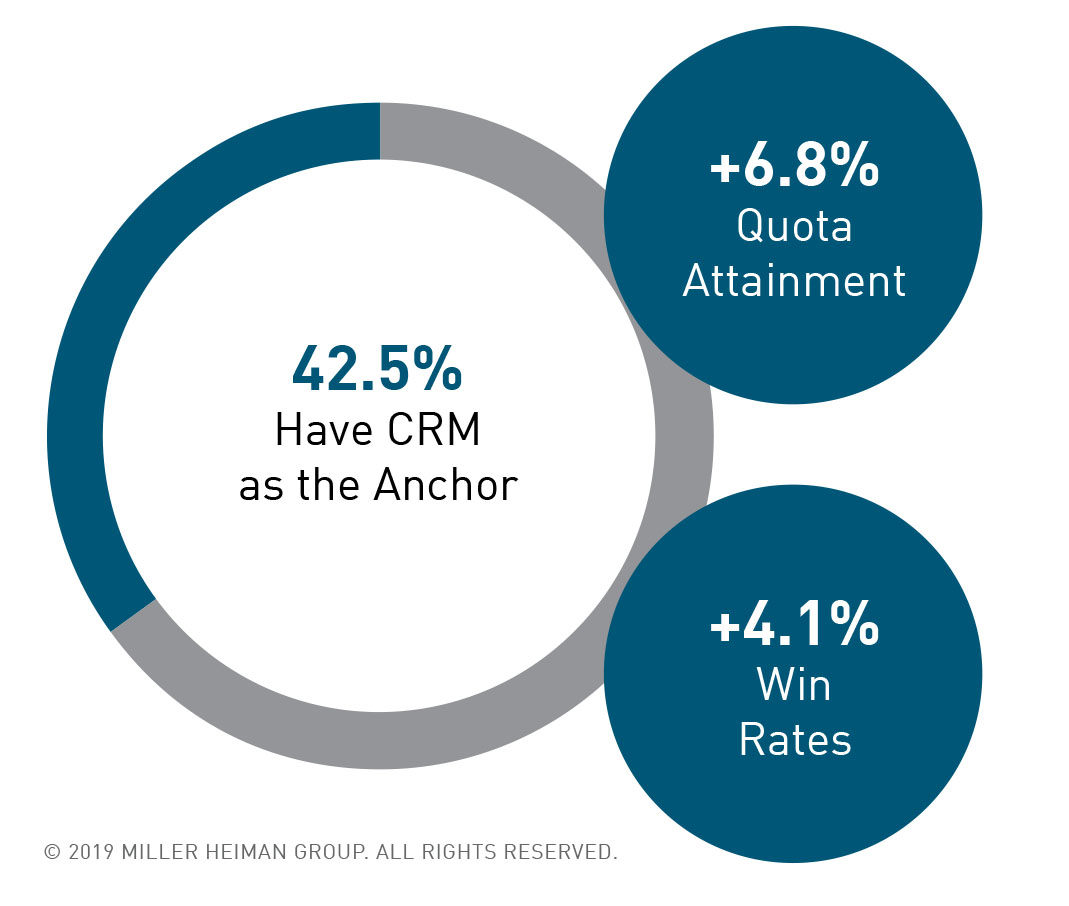Sales Enablement Makes a Difference
Year after year, CSO Insights’ annual enablement study shows that sales enablement drives performance. This year, our 5th Annual Sales Enablement Study found that organizations without sales enablement reported an average win rate of 42.5%. Those with enablement reported an average win rate of 49.0%, 6.5 points higher than those without enablement for an actual improvement of 15.3%.
Yet, not all enablement initiatives are seeing equally positive results. This year’s study also shows that enablement has reached a plateau in many organizations. Even after getting off to a good start, many enablement sponsors aren’t seeing the results they expected, and that’s led to a loss of support for enablement initiatives.
Here are seven ways to jump start a stalled/underperforming enablement initiative based on this year’s research.
1. Align to the Customer’s Path
Year after year, alignment of enablement services and sales processes to the customer’s path surfaces as a key driver of sales performance. This year, 47.9% of respondents said they either do this informally or don’t consider the customer’s path at all. These organizations achieved win rates and quota attainment 10.3% and 7.7%, respectively, below the study average.
Dynamic alignment goes beyond formal alignment to include mechanisms, such as sales analytics, to quickly adapt selling processes (and ideally, marketing, sales, and services processes as well) to changes in buyer behaviors. The 19% of organizations that dynamically aligned their internal selling processes to the customer’s path achieved 17.9% higher win rates and 11.8% higher quota attainment than the study’s average.
2. Shore up a Shaky Foundation
A formal approach to enablement includes a well-documented vision and strategy, including a thorough analysis of the business strategy and the current state of the sales strategy implementation. Organizations with a formal approach achieved win rates two points higher than the study’s average.

While two points may not seem like a huge difference, sales leaders know that a two-point increase in win rates can significantly impact revenues. Higher win rates for forecast deals can also lead to greater forecast predictability. With that in mind, consider that study respondents that followed an informal approach to enablement achieved win rates 3.1 below the study’s average, and those with a random approach achieved win rates 7.2 points below the study average.
A sales enablement charter builds on the formal approach by laying out enablement’s vision, mission, goals, strategy, and tactics. Year after year, our study has shown that a formal approach, with a charter, leads to significant performance improvements. This year, organizations that had a written enablement charter, approved by stakeholders, saw win rates 8.7 points higher than the study’s average, for a real improvement of 18.8%.
3. Engage the Salesforce
An engaged employee is emotionally committed to the organization’s vision and goals. For sellers, this commitment extends to solving customer problems. This year’s study found that when the sales force was fully engaged turnover rates plummeted: 4.3 points for voluntary and 4.5 points for involuntary turnover. Not surprisingly, with lower turnover, these organizations also achieved better performance results: +3.0% revenue attainment, +6.5% win rates, +7.2% revenue attainment.
The number one driver of seller engagement was sales management leadership. Of those organizations that said their sales managers effectively inspired, motivated, and engaged their sales teams to leverage the resources provided, 82.8% also said they had a fully engaged sales force. Offering enablement services for sales managers that are aligned to services for sellers goes a long way toward creating engaging sales managers.
4. Implement a Content Strategy
Creating content involves a lot of moving parts. Enablement needs to orchestrate the contributions of other functions (e.g., marketing, product management, sales operations, legal, and L&D) from design to delivery. They also need to ensure that all content needs are covered and easily accessible to sales. And, they need to manage content throughout its lifecycle.

The results from this year’s study show that creating a content strategy is well worth the effort. The roughly one-third (31.8%) of organizations that had a content strategy achieved 27.1% higher win rates and 18.1% higher quota attainment than those without a content strategy.
Here again, a formal approach to sales enablement made a difference. Respondents that followed a formal sales enablement approach were 5X more likely to have a content strategy than those that approached enablement in an informal or random manner.
5. Allocate Training Resources
Participants in this year’s study spent more on training both sales professionals and their managers than in previous years. However, an impact on performance was only seen after the organization reached a certain level of investment.
Those that invested less than $500 per year per person saw performance results far below the study’s average. Those that invested between $500 and $2500 achieved win rates only a tenth of a point better than the study’s average. However, organizations that invested more than $2,500 per person per year achieved win rates 7.4 points above average. Training’s impact on revenue attainment showed similar patterns.
6. Create Sales Coaches
As in the previous years, the data shows that sales coaching has a huge impact on performance, with dynamic coaching having the greatest impact. In dynamic coaching, the organization has implemented a formal approach to coaching (one that is documented and fully implemented) plus aligned coaching services to the enablement services provided to sales professionals.
This year, organizations that followed a dynamic coaching approached achieved an average win rate of 55.2%, 8.8 points above the study’s average. Conversely, those that followed a random approach, where coaching was left up to the sales manager, achieved win rates 4.6 points below average.
Again, the more formal the sales enablement discipline the more formal sales coaching is likely to be. Of the 86.0% of participants that said they followed a random/informal approach to enablement, only 14.0% said they had a formal or dynamic coaching approach. Of the 43.1% that followed a formal (with or without charter) approach to enablement, 56.9% also followed a formal or dynamic approach to coaching.

7. Tune Up the Engine
Technology can have a big impact on performance. When CRM served as the anchor for enablement technologies, the average quota attainment rate improved by 6.8% and the average win rate by 4.1%.
Having a formal collaboration and production model for services also had a significant impact on results. When both a formal collaboration and production model were present, quota attainment was 13.3 points higher and win rates were 14.9 points higher than when one or both models were random or absent.
Setting and Meeting Expectations
Overall, this year’s study emphasized the impact of having a formal approach to enablement, both at a high level and for the individual facets of enablement. One of the advantages of a formal approach is that it gives enablement leaders a chance to set expectations, both with stakeholders and within the enablement team.
Unfortunately, the percentage of organizations that met or exceeded the majority of stakeholders’ expectations dropped to just above one-quarter (27.5%) this year. However, this group achieved significantly better results than those that only met some expectations. And, those that only met a few expectations achieved results way below average across all KPIs.
The bottom line: If you’re going to invest in enablement, take the time to do it right. A formal approach, though initially more time consuming and potentially more of an investment, is the only way to achieve predictable, sustainable results in the long run.






